|
|
O R A C L E O B S E R V A T O R Y Report 16-17 February 2007 |
|
|
The weather forecast for Friday, 16 February was good so off I went to Oracle Observatory. I left home at 0445 PST and arrived at Oracle at 1415 MST. The temperature was 61°F under clear skies. Set up was typical:
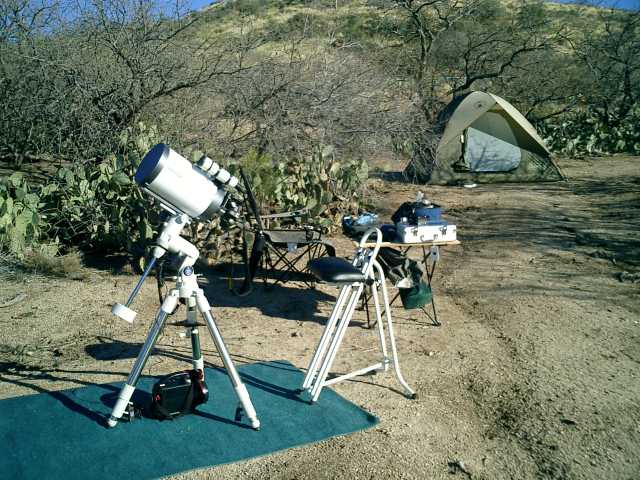
The day before I received a Meade #777 Off-Axis Guider I ordered from OPT for use with my LXD75-8"SC and Nikon D70 DSLR. Here is what it looks like attached to the telescope and camera:

I had one initial problem with it; the screw that holds a reticle eyepiece would not stayed screwed in with the eyepiece inserted and so would not hold the eyepiece firmly. On a whim I decided to try the screw from my Meade #126 Barlow Lens. It worked perfectly in the Off-Axis Guider. And surprisingly the screw from the Off-Axis Guider worked fine in the Barlow Lens!
Sunset was pretty with a few clouds on the horizon:
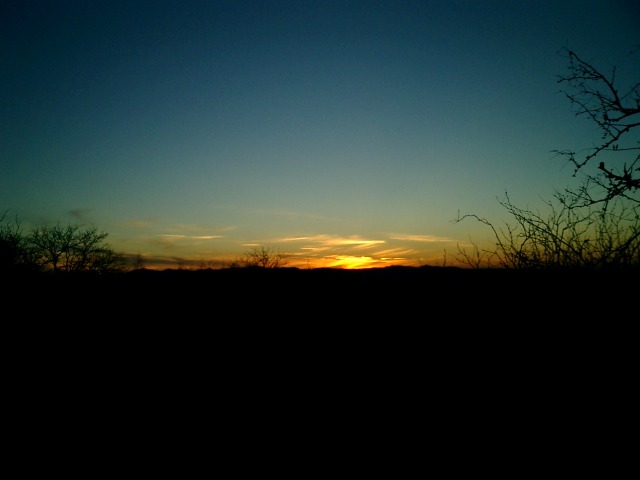
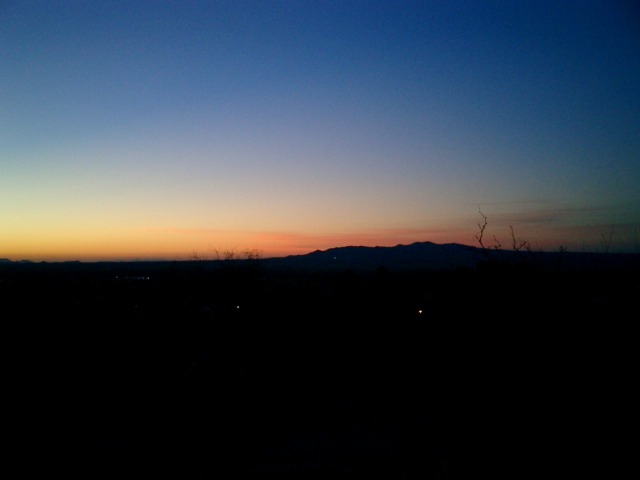
The bright white dot at the top of this photo is the planet Venus:
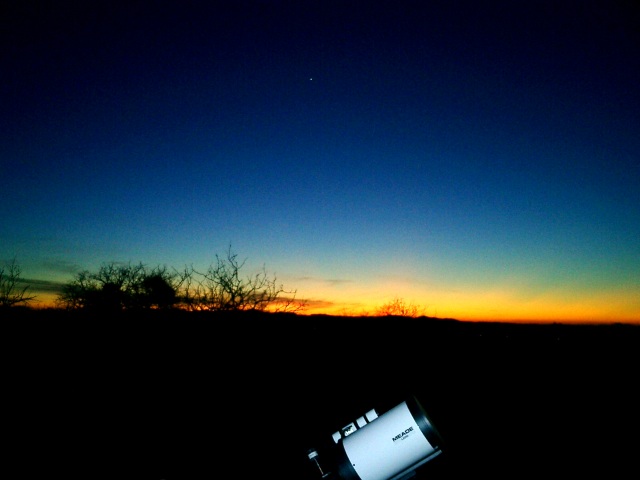
Just before taking the above photograph I was scanning the horizon with my 7x50 binoculars. I was surprised to see Kitt Peak National Observatory. I had no idea it was even visible from Oracle Observatory.
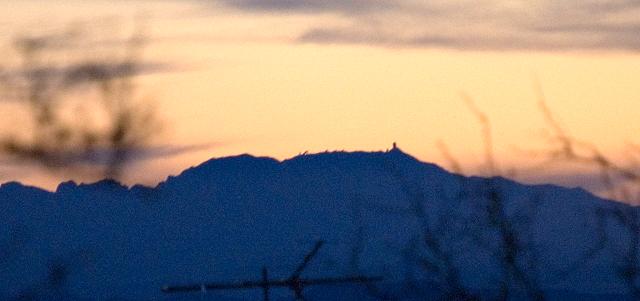
After twilight faded I got another surprise. For the first time ever in my decades of night-time observing I managed to see the "Zodiacal Light"!! It appeared as a well-defined tall and narrow, faintly illuminated, triangular-shaped area standing nearly straight up from the western horizon, rising about 30 degrees into the western sky.
I then started doing some tests with my new Off-Axis Guider. My first target was M42, the Great Nebula in Orion. This approximately 1 minute exposure was done with the D70 set at ISO 1250. I like the results!

It was tremendously gratifying to watch a guidestar in the illuminated reticle eyepiece and know that tracking was pretty accurate during the exposure. For this one, no manual corrections were made.
While Orion was riding high in the south I attached the D70 piggyback on the 8"SC and took the following photograph (200mm focal length, 10 minutes at ISO 1250).
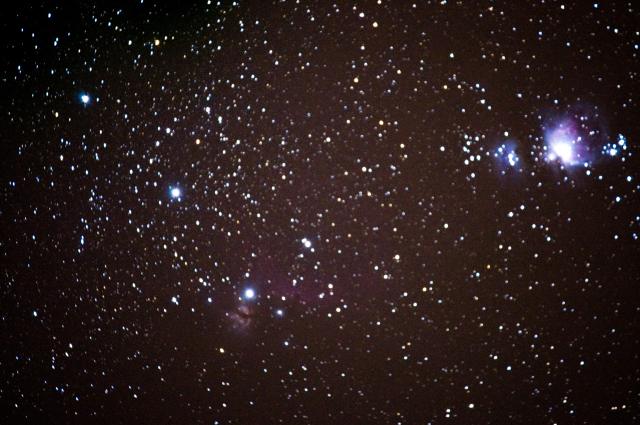
M42 is visible on the right, Orion's three "belt stars" running vertically on the left, the Flame Nebula just below the bottom star, and slightly to the right of the Flame is the fainter Horsehead Nebula.
I then set the camera's zoom lens to 55mm focal length and captured Orion (2 minutes at ISO 1250) as seen in the sky.
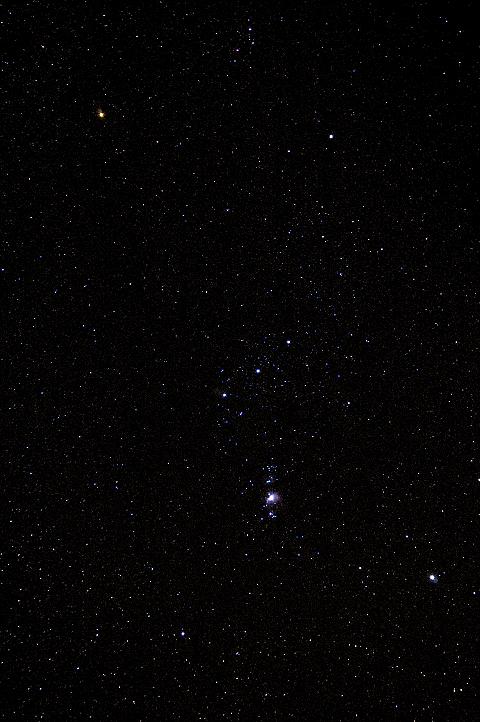
I then went back to trying out the Off-Axis Guider. M51, the Whirlpool Galaxy, was my target this time. This photograph was approximately 5 minutes at ISO 1250 with some manual guiding corrections. (Image cropped from original fullframe version.)

Overall I'm pleased with the Off-Axis Guider. The only challenge is finding a bright star near the target that can be used to guide on through my 12.5mm guiding eyepiece. But once a star is located it is fairly easy to keep it in nearly the same location on the illuminated reticle, yielding long exposures with no or minimal tracking errors. I did discover that when the image in the camera was in focus, the eyepiece was not. I had to slide the eyepiece outward about 5mm to get a focus. I will attach a "parfocal ring" to the eyepiece to compensate for this difference.
At 0145 MST, temperature 41°F, I decided to call it a night, and a highly successful and enjoyable night it was!
I woke up at 0700 MST and went outside to photograph Kitt Peak at sunrise. It was clear but there was a slight breeze. I first shot this view towards the west, where the Earth's shadow and the "Belt of Venus" were visible.
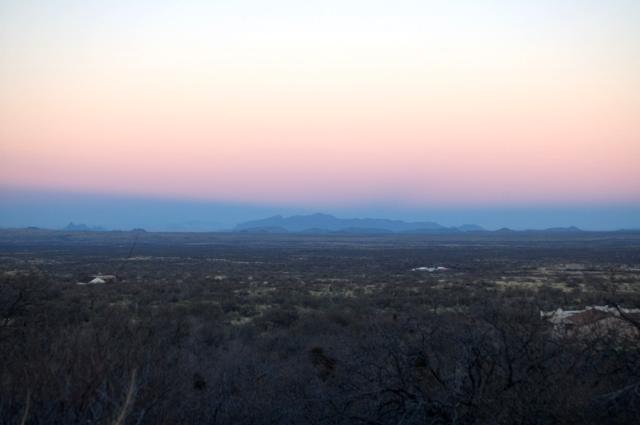
And Kitt Peak.
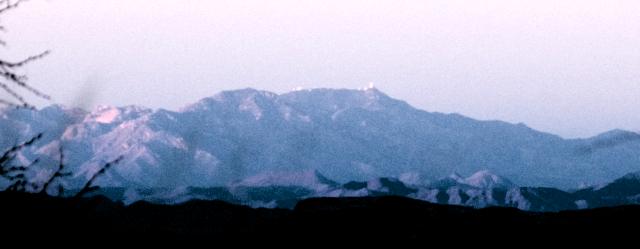
I decided to go back inside the tent and catch some more sleep. At 0850 MST I awoke and headed back out with the intention of checking on my equipment. A few feet outside the tent I happened to glance off to the north and saw this bobcat! He was about 25 feet away. I slowly went back to the tent to grab my camera. (In my 22 September 2006 report I mentioned seeing one and now I have the proof!)
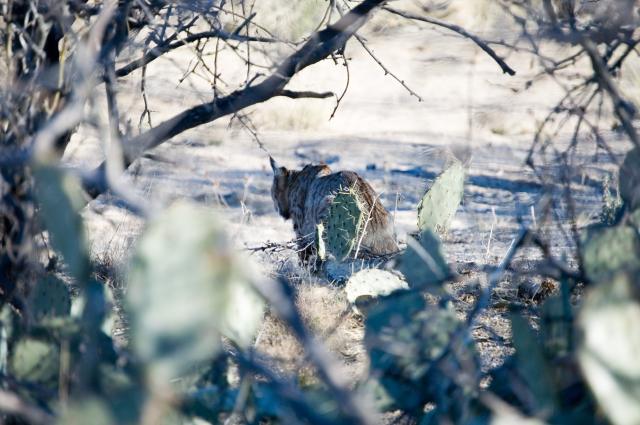
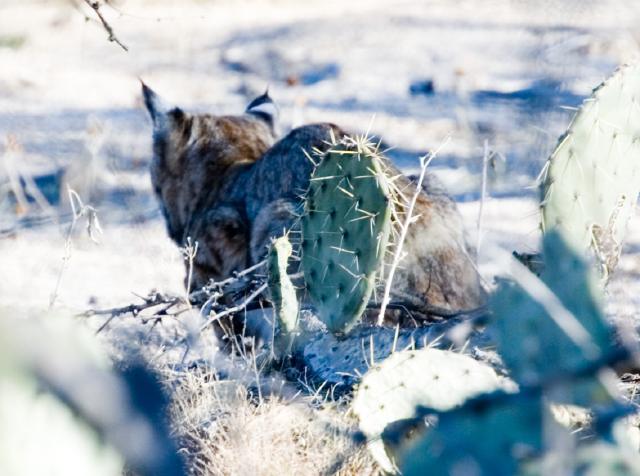
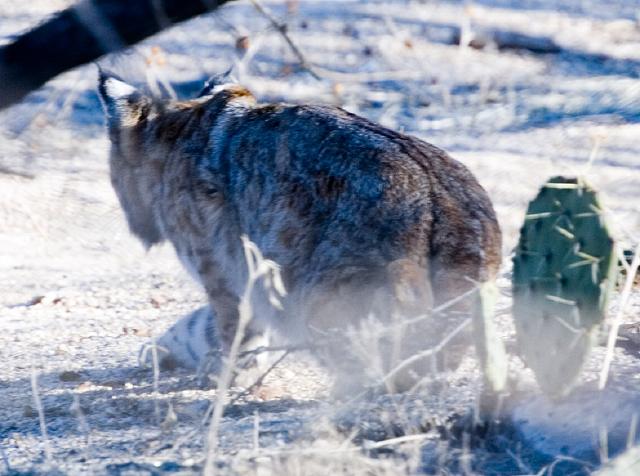
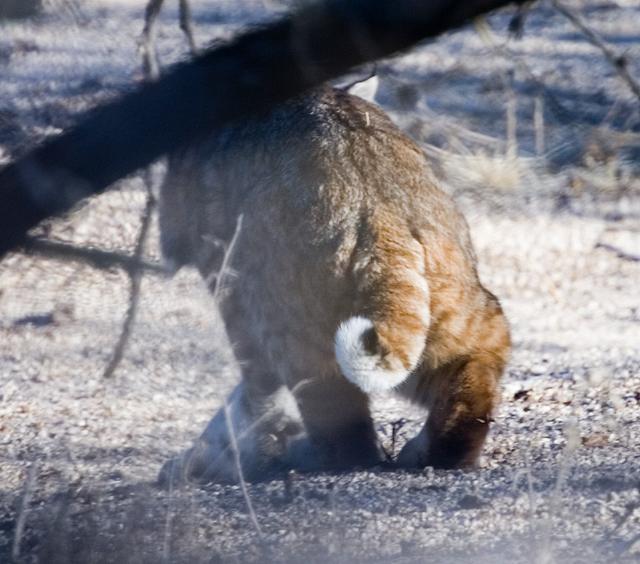

A pretty exciting sight!!! Especially when he (or she) looked at me just prior to the last photograph!
At 1025 MST I decided to check out the Sun using the Coronado Personal Solar Telescope. The Sun was pretty "quiet" today, with just a couple of small prominences visible and no sunspots. The wind was getting stronger and the temperature had climbed to 60°F. Shortly after observing the Sun I called home to check on the "Clear Sky Clock" forecast and learned that by 2200 MST it would be overcast. By 1500, temp 72°F, the clouds covered the entire south half of the sky so I decided to pack up and head home. I left Oracle Observatory at 1645 MST and arrived home at 0000 PST.
This trip was definitely a memorable one with lots of new and exciting things that were seen and photographed.